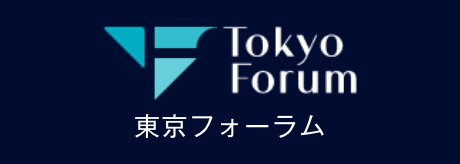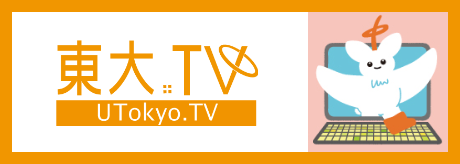- HOME
- Gender & Sexuality in the Spotlight
Gender & Sexuality in the Spotlight
Gender and sexuality are timely, complex, and sometimes divisive concepts that shape our world today. The exhibition "Gender and Sexuality in the Spotlight," invites you to engage with these profound topics that are widely related to everyone, even if we don't always consciously think about them. Exploring the dynamics of identity, self-expression and power, this exhibition offers a mirror to the world we inhabit—a world where gender and sexuality affect our workplaces, media, families, and even our own bodies. It inspires us to question our assumptions to foster a deeper understanding of the diverse range of human expression.
Associate Professor

Michael FACIUS
Generative AI and Gender
Generative AI reflects the values and hierarchies of the society that created it. The gender bias and troublesome depictions of women in AI-generated art is now a widely discussed topic.
I asked the popular AI Midjourney to generate ideas for the theme of this exhibition – “Gender in spotlight” and played a bit with the results. As these two examples demonstrate, the algorithm bends everything into what it learned to be the most probable look for women: white, young, thin, sexualized, and culturally American.
Associate Professor

Michael FACIUS
Generative AI and Gender
You can also tell Midjourney to produce more ‘chaotic’ outcomes that are less stylized to fit into its default aesthetic.
The lower the stylization setting, the more Asian, older, queer-coded, non-sexualized folks show up and the scenes tend to become more surreal, with flying fish and fantastic costumes. What this seems to imply is that humans with these characteristics are as (im)probable for the algorithm as flying fish.
Which of these worlds do we want to live in? And how can AI help us to imagine a more diverse and colorful world instead of reproducing limiting ideas about gender?
Postdoctoral Fellow

Evan DONAHUE
AI & Gender
AI systems have recently become able to learn complex concepts from reading large quantities of text.
For instance, in some cases AI systems have been able to figure out that “man” and “woman” or “king” and “queen” are related by gender. However, in other cases they have assumed that “doctor” and “nurse” exemplify the same relationship, mirroring historical discrepancies in the number of male and female doctors in countries such as the United States and Japan.
Controlling what AIs learn from text is a major research topic in AI.
Postdoctoral Fellow

Cintia Kozonoi VEZZANI
From a Woman’s Quill to Your Inbox
Have you checked your inbox today? It’s hard to imagine a life without e-mails. These electronic texts are our modern letters, an important way for us all to communicate.
Did you know that in 19th-century Europe, writing letters was seen as a predominantly feminine activity? Social norms against women publishing books of their own led many women to write letters to each other to communicate their thoughts.
While today we can all enjoy reading whatever we want and writing in whatever form we choose, this has not always been the case for women.
Postdoctoral Fellow

Cintia Kozonoi VEZZANI
Fighting for the Right to Read
In 19th-century Europe, growing numbers of women learned to read and write, and many brave women campaigned to increase girls’ access to education.
Sometimes it may be tempting to complain about school—but remember that access to education for everyone was the result of a long struggle in which women played a prominent role.
In this painting, the artist Mary Cassatt (1844-1926) depicts her mother as an educated woman reading the newspaper. Perhaps it was Mary’s way of thanking her mother for helping make the world safe for women to read whatever they wanted and speak their minds.
Postdoctoral Fellow

Cintia Kozonoi VEZZANI
A Pioneering Female Brazilian Writer
If you visit a bookstore in Japan, you will see many contemporary literary books written by women. But 150 years ago that was not the case. Writers were majority men, excluding a few exceptions who challenged the gender expectations.
One was the Brazilian writer Júlia Lopes de Almeida (1862-1934). Not only did she achieve the status of one of the most important authors of her time, but she also managed to write on topics that were popular among male writers. Her contributions presented an alternative future for women based on education and financial independence.
Project Researcher

Shannon WELCH
Japanese Brazilian Women Writers
Japanese Brazilian men and women have experienced their immigration journeys from Japan to Brazil in distinct ways.
Reading stories told from a female immigrant perspective can help us to understand some of the different challenges that women have faced.
While both male and female Japanese immigrants have struggled through difficult working conditions, episodes of discrimination, living in an unfamiliar culture, etc., women have additionally faced male dominance within the Japanese Brazilian community.
Project Researcher

Shannon WELCH
Patriarchy as a "Push" Factor
The 1933 short story “Natusyo” written by Hayashi Ise, the younger sister of Japanese author Tanizaki Jun’ichiro, offers a different perspective from the “traditional” Japanese immigrant narrative.
While male accounts tend to focus on the economic “pull” factors that motivate immigration to Brazil, Hayashi’s story sheds light on patriarchy as a “push” factor that can drive women to seek a better life abroad.
Furthermore, it illustrates how gender hierarchies can migrate across borders along with people.
Associate Professor

Trent BROWN
Gender Inequality and Livelihoods in Rural North India
In rural North India, gender norms and expectations profoundly shape people’s life prospects.
Though there are variations by locality and according to caste, religion, and other factors, patriarchal standards shape one’s access to public space, their physical mobility, how and with whom they form social relationships, and their opportunities to develop meaningful or remunerative livelihoods.
These norms are often especially restrictive for women.
Associate Professor

Trent BROWN
Gender Inequality and Livelihoods in Rural North India
Women’s participation in agriculture reflects gender norms.
In many settings across North India, women perform a multitude of agricultural tasks.
Yet, prohibitions on access to public space, restricted physical mobility, and controls on women’s command over cash result in women often having restricted opportunities to sell the products of their agricultural labour on the market or develop identities as agricultural entrepreneurs.
Associate Professor

Trent BROWN
Gender Inequality and Livelihoods in Rural North India
Some activities allow women to challenge gender norms and expectations.
In parts of Himachal Pradesh, mushroom cultivation has become an initiative led by women. As an activity that can be done from home, it does not dramatically interrupt domestic obligations nor patriarchal norms that restrict more ‘public’ forms of livelihood for women.
Yet, it provides women opportunities to develop their own economic ventures and independent sources of cash income.
Associate Professor

Trent BROWN
Gender Inequality and Livelihoods in Rural North India
Gender norms can also be restrictive on men.
Men are more likely to engage in more market-oriented activities – such as this young man, who has developed an identity as a dairy entrepreneur, selling milk door-to-door.
In other contexts, however, family expectations that young rural men should look for salaried employment or waged labour in near and distant cities impedes their prospects to develop skills and livelihoods in agricultural production.
Project Assistant Professor

Maria Telegina
Expression
Our gender and sexuality are integral aspects of who we are, and they contribute to the intricate nature of our identities. These two aspects can be observed, analyzed, and expressed through various sources including language or art. In terms of society, the construction and expression of our identities may be influenced by the spaces we can access and the relationships we form, as well as the labels and expectations imposed on us by others. Language plays a significant role in indicating the presence or absence of these limitations. Our language is a crucial factor that both reflects and affects our position in society, especially considering the challenges posed by global migration, diversity, and digitalization.
Postdoctoral Fellow
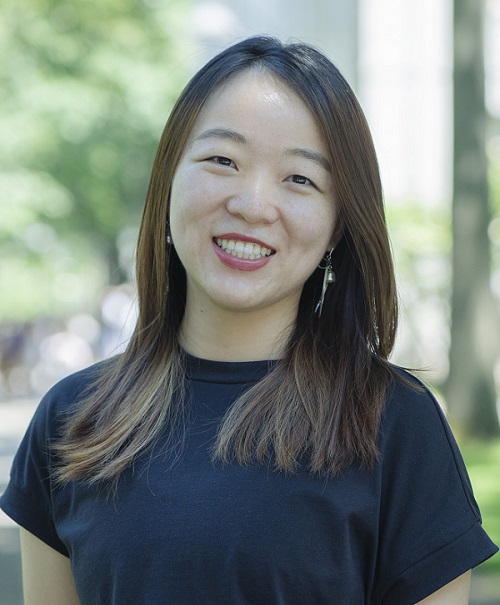
LI Chunyan
Beyond expectations: Women Empowered
"The right of a woman or girl to make autonomous decisions about her own body and reproductive functions is at the core of her basic rights to equality, privacy, and bodily integrity."
~UN, Office of the United Nations High Commissioner for Human Rights
Photo taken in Singapore, June 2023 by LI Chunyan.
Postdoctoral Fellow

LI Chunyan
Resources to Support Women & LGBTQ+ Individuals at UTokyo
UTokyo Offices and Official Projects:
-The Office for Gender Equality: Resource Center for UTokyo Women
-The Disability Services Office: Resource center for students, faculty, and staff members with disabilities
-#WeChange: Gender Equity Initiative to develop female leaders
-KOmaba SaferSpace (KOSS): A “safer” space for women and minority students
UTokyo Networks and Student Groups:
-UTokyo Women & Diversity Network Exchange: UTokyo women’s networking group
-Porta Rubra: An LGBTQ+ support group led by alumni
-UT-TOPOS: An LGBTQ+ student club
-TOPIA: A student club providing support for sexual minorities
-Toward Diversity: A student group promoting gender equality

Gender & Sexuality in the Spotlight
Gender and sexuality are timely, complex, and sometimes divisive concepts that shape our world today. The exhibition "Gender and Sexuality in the Spotlight," invites you to engage with these profound topics that are widely related to everyone, even if we don't always consciously think about them. Exploring the dynamics of identity, self-expression and power, this exhibition offers a mirror to the world we inhabit—a world where gender and sexuality affect our workplaces, media, families, and even our own bodies. It inspires us to question our assumptions to foster a deeper understanding of the diverse range of human expression.
Generative AI and Gender

Generative AI reflects the values and hierarchies of the society that created it. The gender bias and troublesome depictions of women in AI-generated art is now a widely discussed topic.
I asked the popular AI Midjourney to generate ideas for the theme of this exhibition – “Gender in spotlight” and played a bit with the results. As these two examples demonstrate, the algorithm bends everything into what it learned to be the most probable look for women: white, young, thin, sexualized, and culturally American.
Associate Professor

Michael FACIUS
Generative AI and Gender

You can also tell Midjourney to produce more ‘chaotic’ outcomes that are less stylized to fit into its default aesthetic.
The lower the stylization setting, the more Asian, older, queer-coded, non-sexualized folks show up and the scenes tend to become more surreal, with flying fish and fantastic costumes. What this seems to imply is that humans with these characteristics are as (im)probable for the algorithm as flying fish.
Which of these worlds do we want to live in? And how can AI help us to imagine a more diverse and colorful world instead of reproducing limiting ideas about gender?
Associate Professor

Michael FACIUS
AI & Gender

AI systems have recently become able to learn complex concepts from reading large quantities of text.
For instance, in some cases AI systems have been able to figure out that “man” and “woman” or “king” and “queen” are related by gender. However, in other cases they have assumed that “doctor” and “nurse” exemplify the same relationship, mirroring historical discrepancies in the number of male and female doctors in countries such as the United States and Japan.
Controlling what AIs learn from text is a major research topic in AI.
Postdoctoral Fellow

Evan DONAHUE
From a Woman’s Quill to Your Inbox

Have you checked your inbox today? It’s hard to imagine a life without e-mails. These electronic texts are our modern letters, an important way for us all to communicate.
Did you know that in 19th-century Europe, writing letters was seen as a predominantly feminine activity? Social norms against women publishing books of their own led many women to write letters to each other to communicate their thoughts.
While today we can all enjoy reading whatever we want and writing in whatever form we choose, this has not always been the case for women.
Postdoctoral Fellow

Cintia Kozonoi VEZZANI
Fighting for the Right to Read

In 19th-century Europe, growing numbers of women learned to read and write, and many brave women campaigned to increase girls’ access to education.
Sometimes it may be tempting to complain about school—but remember that access to education for everyone was the result of a long struggle in which women played a prominent role.
In this painting, the artist Mary Cassatt (1844-1926) depicts her mother as an educated woman reading the newspaper. Perhaps it was Mary’s way of thanking her mother for helping make the world safe for women to read whatever they wanted and speak their minds.
Postdoctoral Fellow

Cintia Kozonoi VEZZANI
A Pioneering Female Brazilian Writer
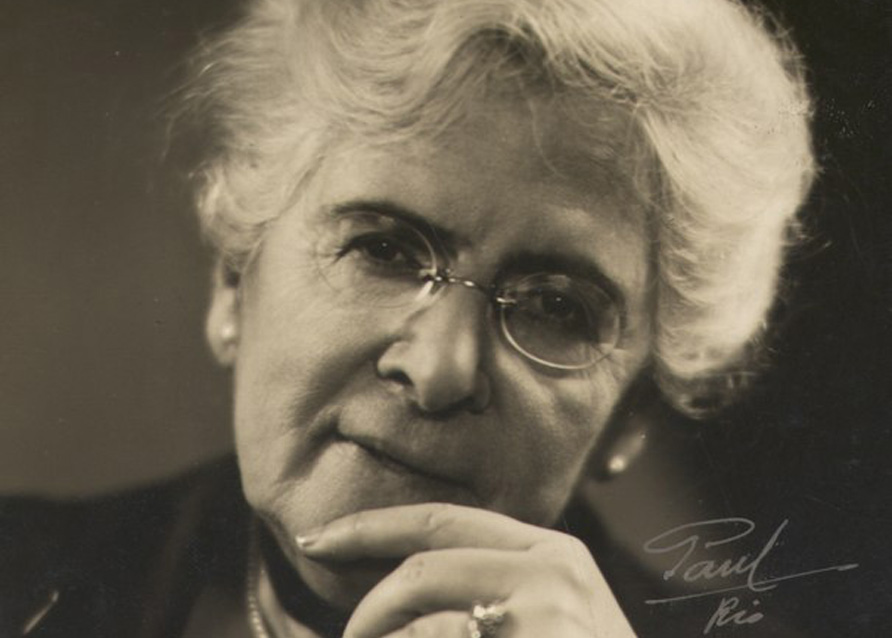
If you visit a bookstore in Japan, you will see many contemporary literary books written by women. But 150 years ago that was not the case. Writers were majority men, excluding a few exceptions who challenged the gender expectations.
One was the Brazilian writer Júlia Lopes de Almeida (1862-1934). Not only did she achieve the status of one of the most important authors of her time, but she also managed to write on topics that were popular among male writers. Her contributions presented an alternative future for women based on education and financial independence.
Postdoctoral Fellow

Cintia Kozonoi VEZZANI
Japanese Brazilian Women Writers
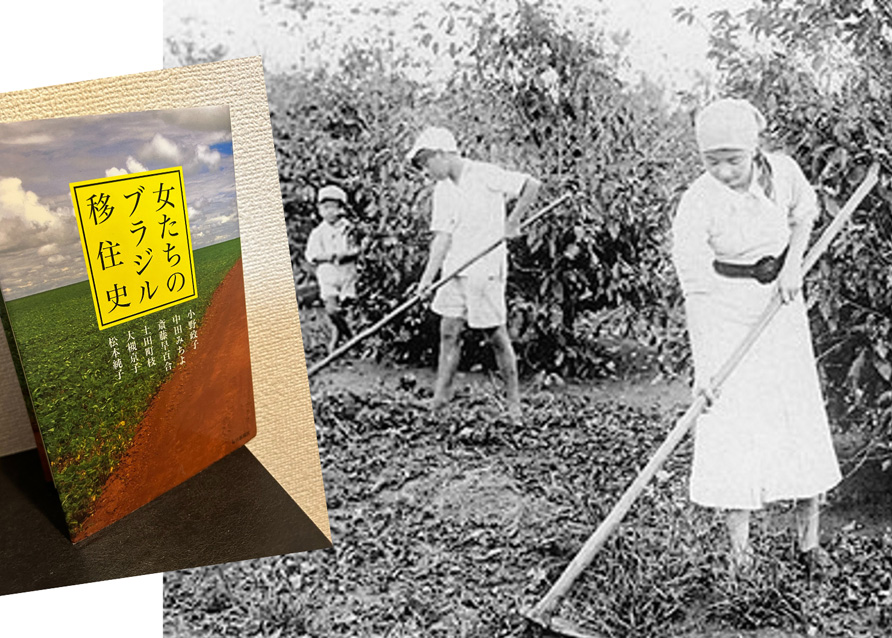
Japanese Brazilian men and women have experienced their immigration journeys from Japan to Brazil in distinct ways.
Reading stories told from a female immigrant perspective can help us to understand some of the different challenges that women have faced.
While both male and female Japanese immigrants have struggled through difficult working conditions, episodes of discrimination, living in an unfamiliar culture, etc., women have additionally faced male dominance within the Japanese Brazilian community.
Project Researcher

Shannon WELCH
Patriarchy as a "Push" Factor
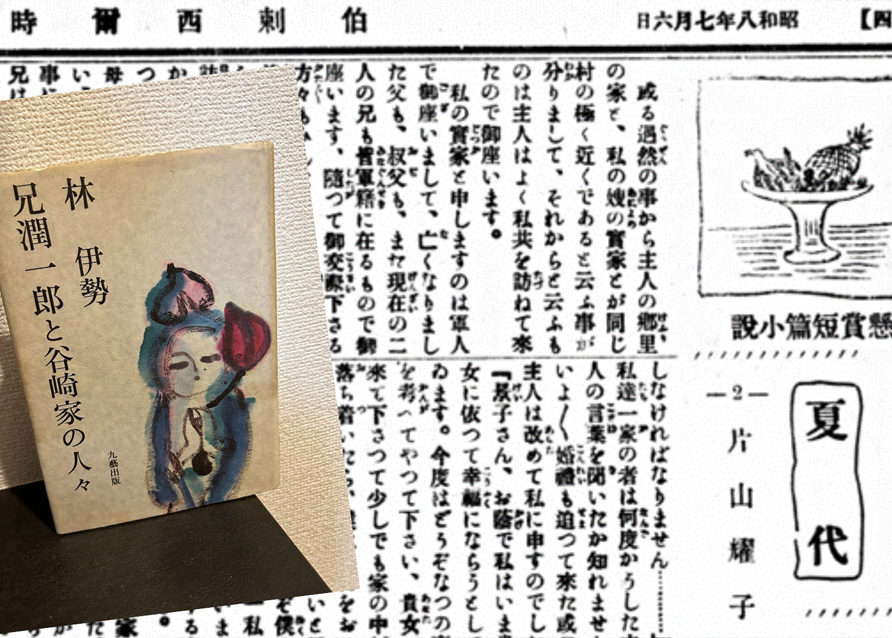
The 1933 short story “Natusyo” written by Hayashi Ise, the younger sister of Japanese author Tanizaki Jun’ichiro, offers a different perspective from the “traditional” Japanese immigrant narrative.
While male accounts tend to focus on the economic “pull” factors that motivate immigration to Brazil, Hayashi’s story sheds light on patriarchy as a “push” factor that can drive women to seek a better life abroad.
Furthermore, it illustrates how gender hierarchies can migrate across borders along with people.
Project Researcher

Shannon WELCH
Gender Inequality and Livelihoods in Rural North India
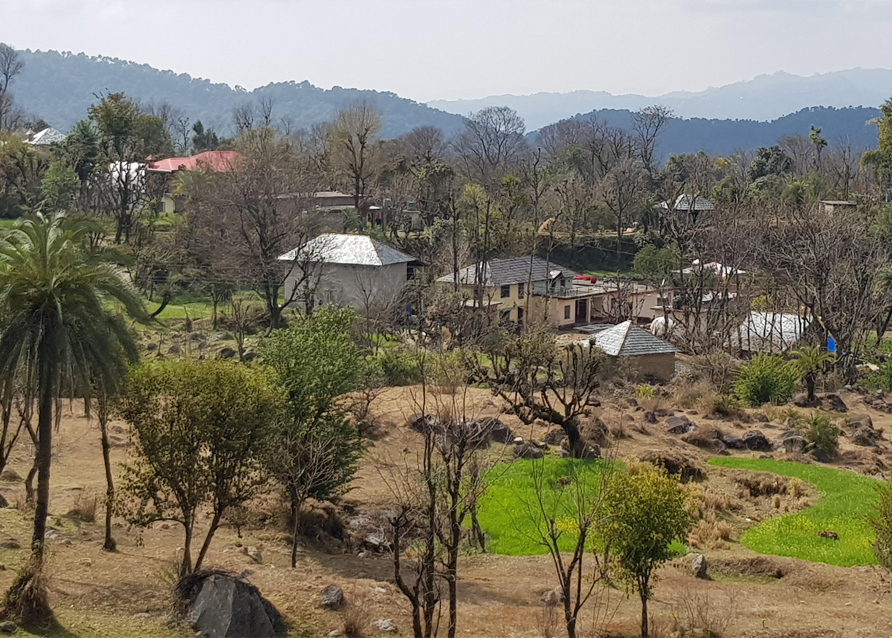
In rural North India, gender norms and expectations profoundly shape people’s life prospects.
Though there are variations by locality and according to caste, religion, and other factors, patriarchal standards shape one’s access to public space, their physical mobility, how and with whom they form social relationships, and their opportunities to develop meaningful or remunerative livelihoods.
These norms are often especially restrictive for women.
Associate Professor

Trent BROWN
Gender Inequality and Livelihoods in Rural North India

Women’s participation in agriculture reflects gender norms.
In many settings across North India, women perform a multitude of agricultural tasks.
Yet, prohibitions on access to public space, restricted physical mobility, and controls on women’s command over cash result in women often having restricted opportunities to sell the products of their agricultural labour on the market or develop identities as agricultural entrepreneurs.
Associate Professor

Trent BROWN
Gender Inequality and Livelihoods in Rural North India

Some activities allow women to challenge gender norms and expectations.
In parts of Himachal Pradesh, mushroom cultivation has become an initiative led by women. As an activity that can be done from home, it does not dramatically interrupt domestic obligations nor patriarchal norms that restrict more ‘public’ forms of livelihood for women.
Yet, it provides women opportunities to develop their own economic ventures and independent sources of cash income.
Associate Professor

Trent BROWN
Gender Inequality and Livelihoods in Rural North India

Gender norms can also be restrictive on men.
Men are more likely to engage in more market-oriented activities – such as this young man, who has developed an identity as a dairy entrepreneur, selling milk door-to-door.
In other contexts, however, family expectations that young rural men should look for salaried employment or waged labour in near and distant cities impedes their prospects to develop skills and livelihoods in agricultural production.
Associate Professor

Trent BROWN
Expression

Our gender and sexuality are integral aspects of who we are, and they contribute to the intricate nature of our identities. These two aspects can be observed, analyzed, and expressed through various sources including language or art. In terms of society, the construction and expression of our identities may be influenced by the spaces we can access and the relationships we form, as well as the labels and expectations imposed on us by others. Language plays a significant role in indicating the presence or absence of these limitations. Our language is a crucial factor that both reflects and affects our position in society, especially considering the challenges posed by global migration, diversity, and digitalization.
Project Assistant Professor

Maria Telegina
Beyond expectations: Women Empowered

"The right of a woman or girl to make autonomous decisions about her own body and reproductive functions is at the core of her basic rights to equality, privacy, and bodily integrity."
~UN, Office of the United Nations High Commissioner for Human Rights
Photo taken in Singapore, June 2023 by LI Chunyan.
Postdoctoral Fellow

LI Chunyan
Resources to Support Women & LGBTQ+ Individuals at UTokyo

UTokyo Offices and Official Projects:
-The Office for Gender Equality: Resource Center for UTokyo Women
-The Disability Services Office: Resource center for students, faculty, and staff members with disabilities
-#WeChange: Gender Equity Initiative to develop female leaders
-KOmaba SaferSpace (KOSS): A “safer” space for women and minority students
UTokyo Networks and Student Groups:
-UTokyo Women & Diversity Network Exchange: UTokyo women’s networking group
-Porta Rubra: An LGBTQ+ support group led by alumni
-UT-TOPOS: An LGBTQ+ student club
-TOPIA: A student club providing support for sexual minorities
-Toward Diversity: A student group promoting gender equality
LI Chunyan, Postdoctoral Fellow

LI Chunyan
TOP



